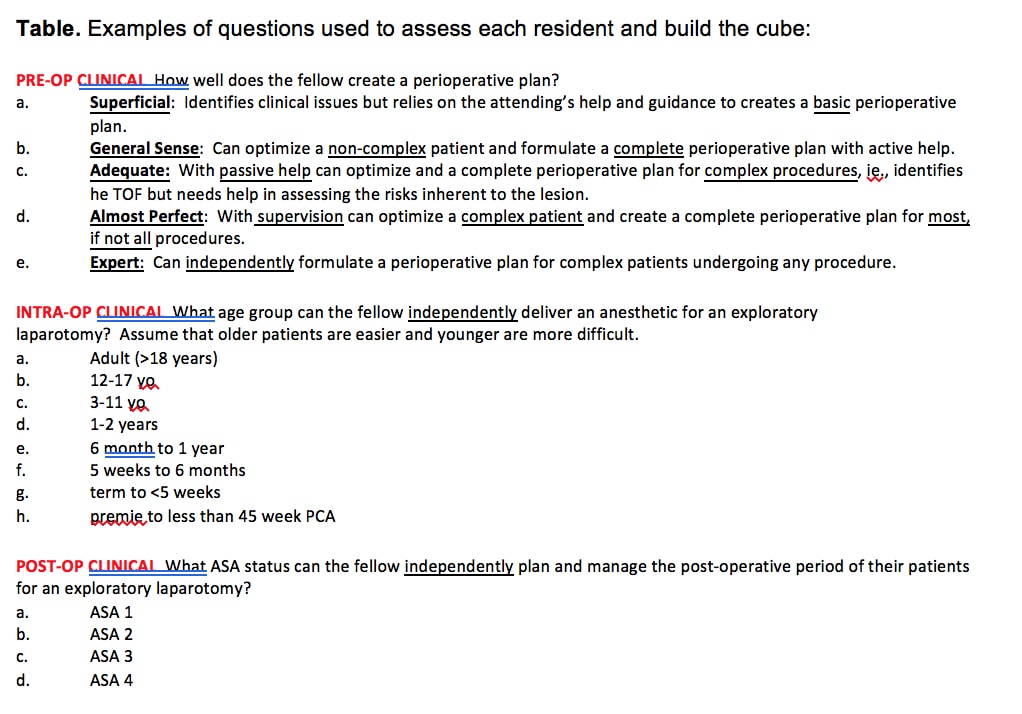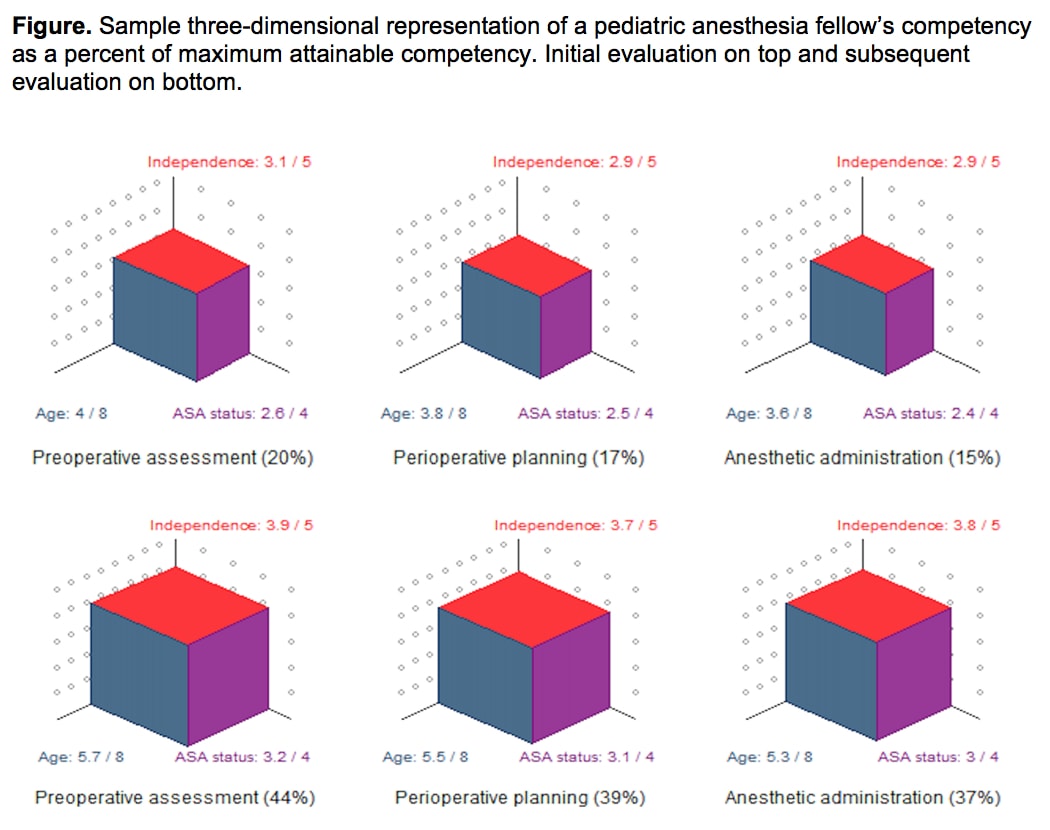GA2-66
The Evaluation Cube: A Novel Approach to Assessing Pediatric Anesthesia Fellows
Romnek M, Tumin D, Corridore M
Nationwide Children's Hospital, Columbus, OH, USA
Background: The goal of a pediatric anesthesia fellowship is to train individuals who can independently manage all perioperative aspects of a patient regardless of age or severity of illness. Numerical scores on fellow evaluations can help track progress toward this goal. To reflect the three dimensions of pediatric anesthesia— independence, case complexity, and, as distinct from adult programs, patient age— we created a visual tool that combines the three dimension scores into a cube, and expresses competency as the volume of the cube. We propose that using this visual format improves communication of fellow evaluation results.
Methods: At our institution, attending anesthesiologists evaluate fellows on preoperative planning, intraoperative management, postoperative planning, and technical skills, using a structured questionnaire (Table). In each section, evaluators rate a fellow’s level of independence, and the lowest age and highest ASA status of the patient for whom the fellow can care independently. Higher ratings indicate greater independence, lower age, and higher ASA status, such that the cube volume formed by these three dimensions expresses overall competency.
Results: This form of fellow evaluation was implemented at our institution in 2015, superseding evaluations relying on raw numeric scores or two-dimensional graphical representation. We have used cube volume, as a percent of attainable maximum (Figure), to summarize a fellow’s competency at 3-4 time points during the year. Change in cube volume was used to illustrate a fellow’s progress. We have also used the shape of the cube to facilitate discussion about fellows’ different educational needs. For example, one fellow may be able to function independently over a large range of complexity, but only in older patients; whereas another fellow with a similar cube volume may function less independently, but over a broader age range.
Summary: Using numerical questionnaire responses, we have constructed a three-dimensional representation of fellow competency that facilitates fellow evaluation and discussion of their educational plan. Increasing cube volume over time succinctly summarizes the clinical maturation of the fellow. More importantly, the cube format shows fellows aspects of their clinical skills that may need more attention, and encourages a well-rounded comprehension of their current skill sets. This novel evaluation tool has been well received in our department, and has provided fellows with a graphical representation of their progress throughout their fellowship training.
Reference: DaRosa et al. J Surg Educ 2013;70:24-30.
Top













